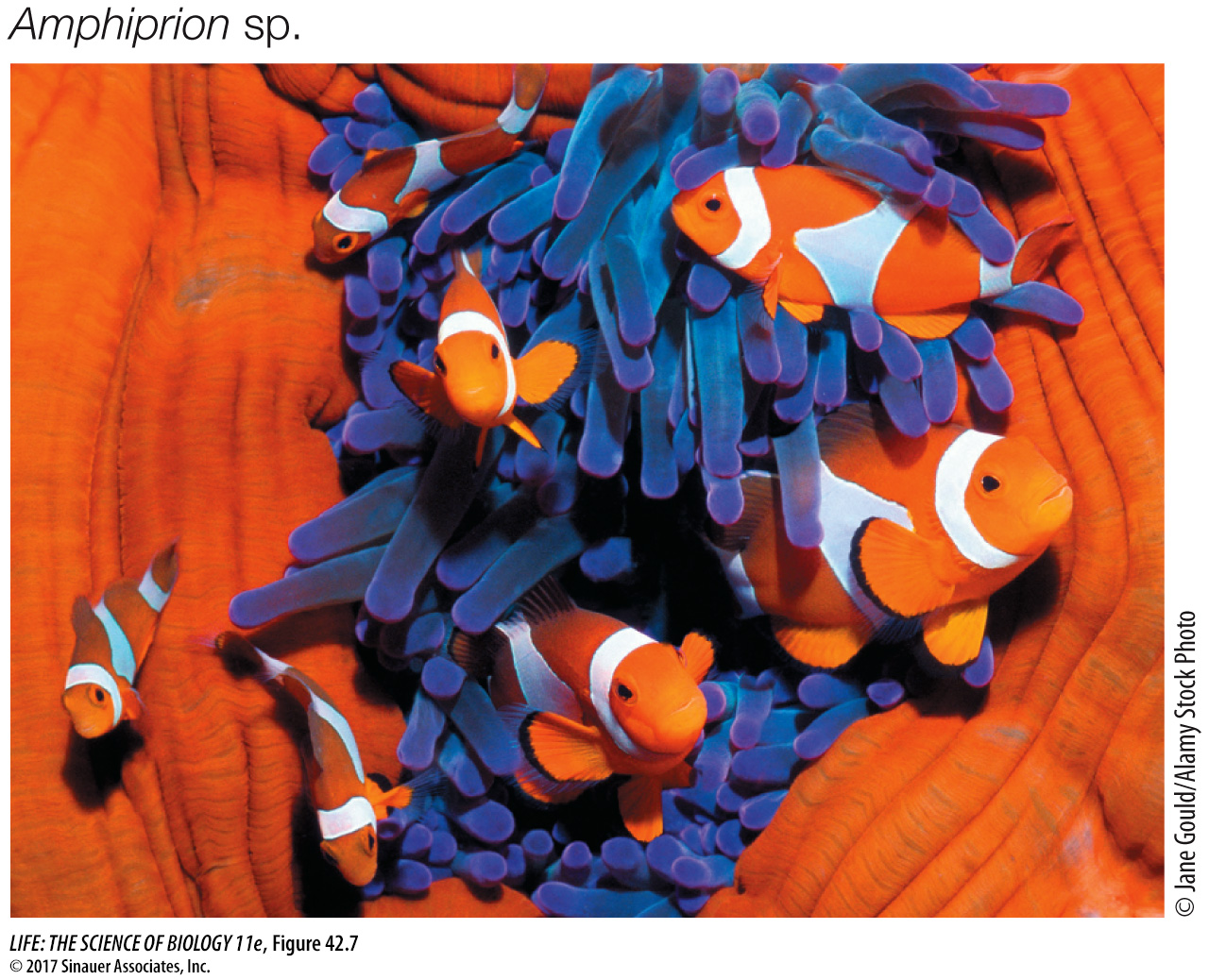Some individuals can function as both male and female
In most species, gametes are produced by individuals that are either male or female. Species that have separate male and female members are referred to as dioecious (Greek, “two houses”). In some species, however, a single individual may produce both sperm and eggs. Such species are monoecious (“one house”), or hermaphroditic.
Almost all invertebrate groups contain some hermaphroditic species. An earthworm is an example of a simultaneous hermaphrodite, meaning an individual is both male and female at the same time. When two earthworms mate, they exchange sperm, and as a result the eggs of each are fertilized (see Figure 32.12C). Some vertebrates are sequential hermaphrodites, meaning an individual may function as a male or a female at different times in its life. An example is the anemone fish, or clown fish, a species that lives in small groups within large sea anemones (Figure 42.7). All anemone fish are born male. The largest fish in a group becomes a functional female. If that fish is removed from the group, the next-

What is the evolutionary advantage of hermaphroditism? Some simultaneous hermaphrodites, such as parasitic tapeworms, have a low probability of meeting a potential mate—